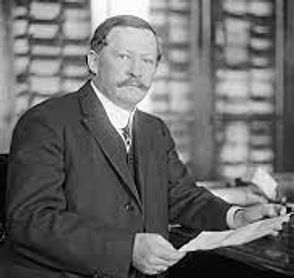Milford History Online
Milford in the Grippe
For Milford residents living through the COVID-19 crisis, coping with the epidemic — as well as the rules and regulations it spawned — was a unique, life-altering experience. Yet despite all the firsts of COVID, one century earlier, there was a nearly perfect blueprint for such a health crisis. Social distancing, school closings, mask-wearing, xenophobia, predictable second and third “waves,” and the slow reactions of leaders were all part of the influenza epidemic of 1918. Unfortunately, as the nation stumbled through the initial months of COVID, the lessons learned 100 years before were often lost to history.
Although the first reports of the influenza that would kill more than 50 million people around the world came from Kansas in March of 1918, it took the moving armies of World War I to spread the virus. Though the flu epidemic did not start in Spain, the censors in that country were not as strict as in other European nations. Because they actually reported the health crisis within their borders, the influenza breakout soon became known as the “Spanish Flu.”
After a mild first wave, it was the second wave of influenza in the fall of 1918 that would ransack the United States and spread rapidly into small towns like Milford. Local and national leaders seemed slow to respond. As late as September 19th, the Milford Cabinet reported that “the local health officer has received no specific instructions from the state department” about the virus that was overwhelming the town. Still, the Cabinet did not seem overly concerned, commenting that “the influenza is certainly having a great run. It seems as though half the town are getting it or just getting over it,” before suggesting that “probably a large proportion of those people who think they have the disease are suffering from hay fever or the fall colds and sniffles.”
The next week, the Cabinet was not so blithe. By the end of September, the paper reported that the Red Cross was “on the job.” Eight automobiles with three workers in each canvassed the entire town, asking who was sick in each home and compiling the results on questionnaries. The Red Cross also distributed food and broth to families so ravaged by the flu that cooking was nearly impossible.
The virus moved with tremendous speed through town. By October 10, the Cabinet was packed with obituaries of those dead from the flu. “Milford is still in the throes of an influenza-pneumonia epidemic. The list of deaths grows daily.” Health warnings were replete throughout the paper such as the front-page headline: “Don’t Spit on the Sidewalk.” After announcing a $10 fine for such behavior, the paper did allow that “Milford men (and ladies) who get a mouthful of sand from some speeding automobile are not required to swallow it but must wait long enough to get to the edge of their walk.”
More relevant advice came in another article: “Influenza is a crowd disease. Avoid crowds as much as possible. Influenza spreads when ignorant persons sneeze or cough without using a handkerchief. Avoid common drinking cups and roller towels.” And the printed conclusions of Surgeon General Rupert Blue on Page 1 sound familiar to anyone who lived through COVID: “It is now believed that influenza is always spread from person to person, the germs being carried with the air along with very small droplets of mucus.” A local article advised “Wear a protector of cheese cloth over the mouth. These may be obtained at the Red Cross House.”
During October in Milford, a town of less than 4,000 people, more than 40 residents (and Milford folks living elsewhere) died from the flu. There were more than 600 total cases in the town. The Cabinet ran a bevy of front-page obituaries each week in October.
These included Thomas Wadleigh, the 17-year-old son of town leader Fred Wadleigh, who died during his first month at Dartmouth. Most of the Milford High graduating class of 1918 would attend his funeral at the family home on Summer Street. Alice Mary Cassidy, who was called home from Lowell Business College to attend to the four members of her family who had taken ill and then died a week later from the flu. Leon Merrill, an Odd Fellow and Methodist Church member who died in Tewksbury at the nearest hospital that could take him. Dr. Jesse Dearborn, a Milford native and graduate of Milford High School and the University of Vermont Medical School who passed away at a friend’s home after suffering a week of influenza. Milford quarryman and Scotland native Alexander McCormick who died at the age of 48. Mrs. Annie L. Powers, wife of the well-known Milford menswear merchant Fred Powers, as well as 15-year-old Willie Pratt, who worked at the Milford creamery and was “an industrious boy who was well-liked by everyone who knew him.” More deaths were reported in the following weeks as complications were described by the Milford Cabinet: “The doctors are overworked and nurses to care for the sick are impossible to secure.”
Responding to the health crisis, all Milford schools were closed by October 19 and there were bans on church services, theaters and public gatherings. But such actions proved tardy as the flu had already passed through much of the town’s population. The Cabinet observed at the end of October that the “the disease has now run its course” and indeed, there would be no deaths reported in November. It had been a short, quick, and deadly strike on the town.

Above Left: A Milford Cabinet headline announcing the epidemic to be over.
Above Right: Surgeon General Rupert Blue's warnings appeared in the Cabinet in October 1918.
This website uses cookies.
We use cookies to analyze website traffic and optimize your website experience. By accepting our use of cookies, your data will be aggregated with all other user data.